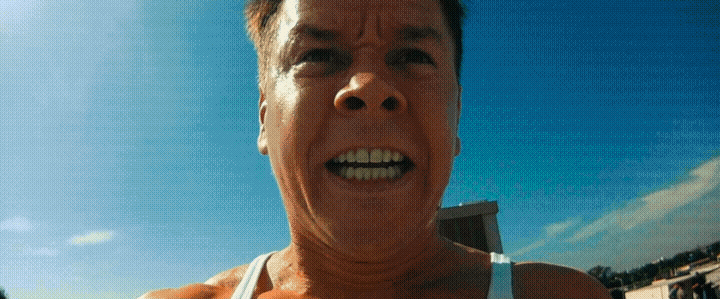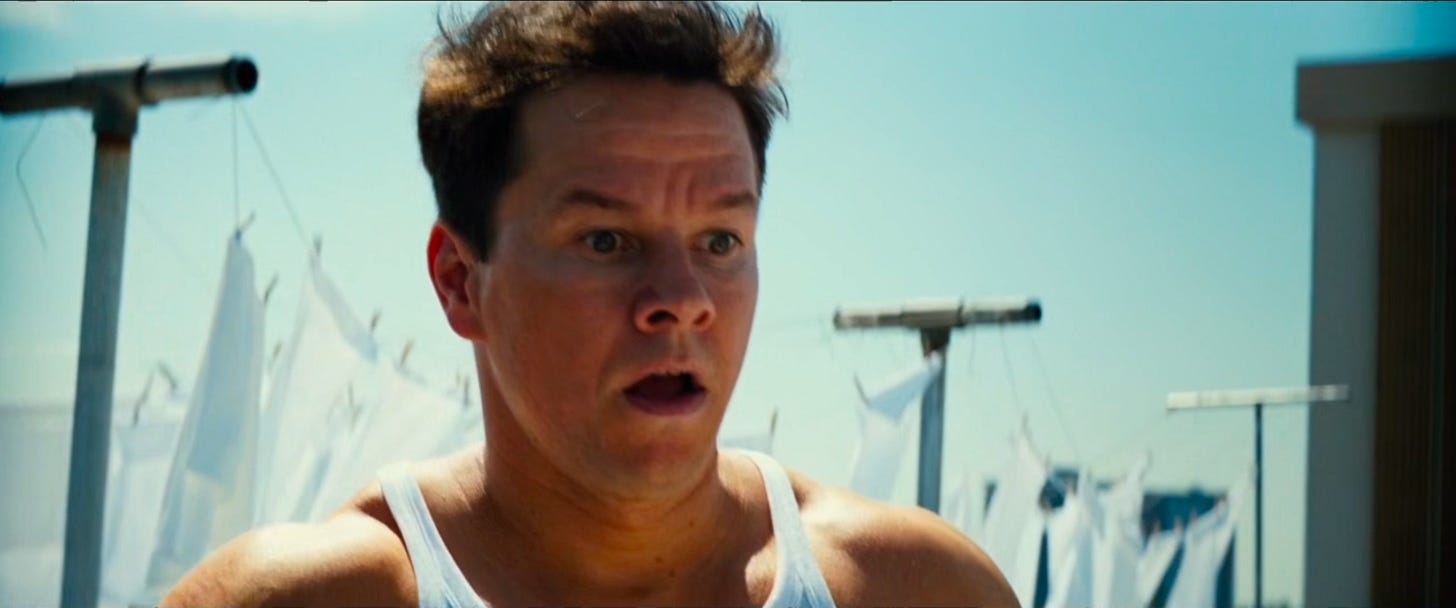Strong Openings: PAIN & GAIN
Opening scenes can shock, excite, confuse, foreshadow, introduce characters, establish world rules, and more. Beyond simply setting a tone, they start teaching the audience how to ‘read’ the movie — style, point of view, whether they lie or tell the truth (for example, if what a narrator says is at odds with images shown, the audience knows they are unreliable), are all crucial to forging the filter which colours how an audience processes and interprets the rest of the film.
No pressure.
Today we’re looking at what Pain & Gain’s opening shots tell us about Daniel Lugo and his immediate circumstances.
As a place to do sit-ups, the location is extreme; he could do these on an incline bench, but he’s chosen to hang off a wall a few stories up over concrete.
This is a guy who likes to feel cool and be SEEN.
The shots underline this as they go through some ‘unnecessary’ angles, including angles which show him silhouetted against the sun like an angel, and an upside-down shot cutting directly into its reverse where the camera is strapped to Daniel moving with his situps and self-pump mantra. Bonus points for an early jump on that orange-and-teal Bay loves so much.


At 0:17 starts a flawless 10 seconds, from editing-on-motion to the slight shakiness of Daniel’s upside-down Point of View.
in a MCU, Daniel twists his head; cut to a similarly-twisting POV shot of cops arriving, complete with slight shakiness to simulate his upside-down body.
Back to the starting MCU, as Daniel's arm reaches through frame, cut into the medium of his arm grabbing the situp bar to hop down
Halfway through the hop, cut into a medium wide until he lands and begins to run, then wider as he flees.
The freneticism echoes his heartrate (pounding from workout, then adrenalised fear) and the rapidly increasing shot size seamlessly uses the motion of Daniel’s body to guide the edit flow.
On the Run
Having established Daniel’s personality and situation as well as multiple stylistic choices (quick edits, orange-and-teal colour scheme, and use of point-of-view), the next sequence continues to use all these, as Daniel’s voiceover kicks in.
The editing is frenetic, but the overall direction isn’t at random; both Daniel and the cop vehicles are roughly moving R-L from 0:25-0:44 where we get a dead-on shot as Daniel stops to stare down, before everyone starts running L-R.
Then at 0:57 Bay adds another technique to the mix . . .
Frame Rate / Shot Speed
On a practical level, this lets the final edit tweak everything from exactly how long shots last under the voiceover performance, to showing off Daniel’s hilarious breakdance-esque stunt with the car.
[We’re gonna do a whole mini-post on this stunt, stay tuned!]
Similarly to how the rapidfire cuts mimic Daniel’s heartrate, this expanding and contracting of shots simulates how our brains can work in panic mode, fixating on the wrong things, life ‘flashing before our eyes,’ and moments before impact feeling like minutes.
Smash to black
(and Ed Harris talking, which segues into his character introduction).
Takeaways
Broadly the main type of shots:
depict events — what Daniel is doing, what the cops are doing, where they are in relation to each other
show POV — so we know what Daniel is aware of
Are hyper-stylised — lens flare, slo-mo, strapped to a moving person, etc.
There’s plenty of Venn crossover, eg. some POV shots depict what the cops are doing, some shots depicting what Daniel is doing are hyper stylised, etc.
But they’re clearly not taken at random; they all work together to tell *what* is happening, while the edit and speed-ramping depict *how* Daniel feels.
When constructing your opening, consider how your shots will be strung together to give the audience a sense of character(s) and their emotions, as well as setting up the plot events.






